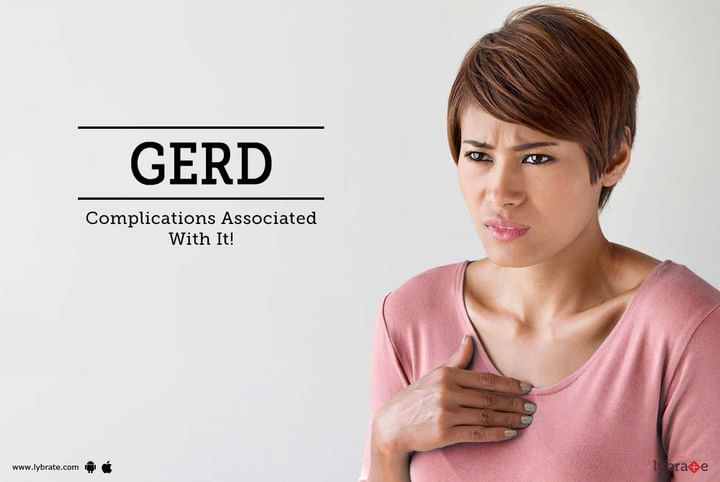GERD - Complications Associated With It!
GERD or acid reflux is caused by the regurgitation of acidic liquid stomach contents back up into the esophagus. It is a long-term condition where stomach contents come back upwards from the gastro-intestinal tract resulting in either symptoms or complications. It is a commonly occurring digestion condition. A burning sensation in the chest is usually caused by acid reflux which radiates up from the stomach to the mid-chest or throat. This condition is also known as the heartburn. A sour taste in the back of the mouth is a common experience amongst the patients. Long term reflux of gastric contents causes the condition to become chronic which can lead to difficulty in swallowing. In some cases the erosion of the tract lining can also cause breathing problems.
Symptoms:
- Heartburn is a burning sensation felt in the retrosternal area. Most commonly it occurs post-prandial or nocturnally. Consumption of fatty foods, spicy foods, acidic foods aggravates the condition. Burning sensation is relieved with antacids, water or milk.
- Perception of gastric content reflux in the mouth or hypopharynx is termed as acid regurgitation. It is also known as water brash. A bitter or acidic taste is felt in the mouth.
- Other symptoms include dysphagia, odynophagia, nausea, chest pain, dyspepsia, epigastric fullness, bloating, frequent belching
- Extra-esophageal symptoms like chronic cough, hoarseness, laryngitis, dysfunction of the vocal cords, bronchospasm can also be observed.
Complications:
- Peptic stricture
- Ulcers of the esophagus
- Metaplastic disease (Barrett’s esophagus)
- Dysplastic disease (Adenocarcinoma)
- Laryngitis or bronchitis
- Pulmonary disease
- Fluid in the sinuses and the middle ear
Diagnosis:
The diagnosis of GERD is made by its most commonly presenting symptom- heartburn. To confirm the diagnosis of GERD, the physicians treat patients with medications for suppression of the production of acid by stomach. If heartburn diminishes to a large extent by the medications, diagnosis of GERD is considered confirmed.
Conditions like an ulcer caused by bacterial infection, mimic the symptoms of GERD. To get a clearer diagnosis, an endoscopy is then performed. The common diagnostic modality for GERD is Upper intestinal gastro-endoscopy. A tube containing an optical system for visualization is swallowed, the tube progresses down the gastrointestinal tract, and then the lining of the esophagus, stomach, and duodenum can be examined. A normal esophagus is observed in most patients with symptoms of reflux.
However, sometimes the lining of the esophagus appears inflamed. If erosions (superficial breaks in the esophageal lining) or ulcers (deeper breaks in the lining) are seen, a diagnosis of GERD can be made definitely. Other complications of GERD like ulcers, strictures, and Barrett's esophagus are also identified. Biopsies also may be obtained. Other common problems that may be causing GERD like symptoms can be diagnosed (for example ulcers, inflammation, or cancers of the stomach or duodenum) with EGD. Previously, barium meal x-ray was undertaken to diagnose GERD. It is now discontinued.
Other tests that are carried out are esophageal acid testing, esophageal motility testing, gastric emptying studies and acid perfusion test.
Treatment:
- Lifestyle modifications – Avoiding acidic foods, quitting smoking, weight loss, abstaining from alcohol consumption improves symptoms in people with GERD.
- Medications – Proton pump inhibitors (Pantoprazole, Omeprazole, Rabeprazole), H2 receptor blockers (Ranitidine, Cimetidine) and antacids.
- Surgery – In cases where the proton pump inhibitors are unsuccessful in relieving symptoms of GERD, a surgical procedure called Nissen fundo-plication is done.
In case you have a concern or query you can always consult an expert & get answers to your questions!



+1.svg)
